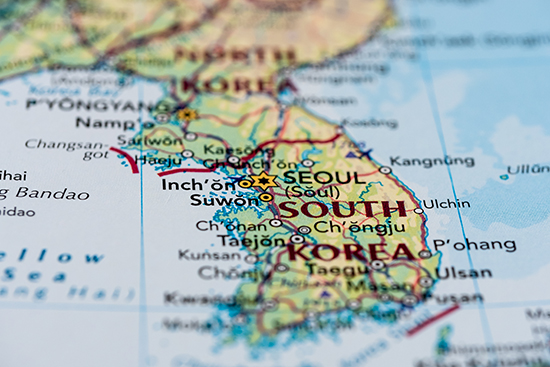The following is an excerpt from the first section of this report:
Battle of Paengyong-do
The crisis, like so many others, began with threats and claims of grievances from North Korea, amid rumors about contentious palace politics in Pyongyang. The sister of North Korean leader Kim Jong-un publicly warned of dire consequences for South Korean “violations” of a 2018 inter - Korean agreement on activities in the disputed waters of the West (Yellow) Sea, claiming that North Korea was preparing to take “defensive” military action in response. Seoul and Washington quickly agreed on increases in alert levels and other carefully calibrated measures to meet the threat but hesitated to authorize a major repositioning of forces just to respond to what seemed to be yet another North Korean bluff—particularly after Beijing warned “all sides” not to escalate the crisis. South Korea’s president, confident in his military advantage and backing from his US counterpart, chose not to retreat in the face of North Korean threats and unreasonable demands. Pyongyang, well aware of its weaknesses, still pushed forward with escalation to violence, gambling that it had chosen the right time and place to turn the tables on its more powerful adversaries with a surprise strike using new advanced weapons.
The skirmishes at sea began the next day. The North Korean navy, clearly outmatched, could not win a series of small surface engagements near the westernmost island of South Korea—Paengyong-do—less than 10 miles off North Korea’s coast. Seoul and Washington were relieved as the North Korean vessels that were not sunk quickly retreated, but these skirmishes were only the prelude and pretext for the real attack. Within hours, North Korea retaliated against Paengyong-do’s garrison with volleys of guided artillery rockets along with carefully targeted salvos of the new ballistic and cruise missiles it had repeatedly test launched in recent years—all fired from mobile launchers based on North Korea’s massive Hwanghae Peninsula adjacent to the island. Meanwhile, threats from North Korean anti-ship missiles and submarines hampered the Republic of Korea (ROK) navy’s support of the island’s defense.
The ROK forces on all five of its Northwest Island s returned fire, but their defenses were quickly overwhelmed by numerous accurate projectiles. South Korea did its best to hit back, unleashing its own land- and sea-based missiles. They counterattacked North Korean artillery and missile units while also striking some key military targets in North Korea to disrupt the attack and punish Pyongyang’s aggression without initiating all-out war—or triggering nuclear retaliation.
Despite South Korea’s far superior intelligence capabilities and more advanced missiles, the challenge was immense. South Korea was trying to find, track, and quickly strike North Korean mobile launchers in more than 8,000 square kilometers of the well-defended Hwanghae Peninsula, including mountain ranges riddled with underground facilities. Meanwhile, the defenders of Paengyong-do were confined to a limited number of points on an exposed island a mere 45 square kilometers in size (the other four Northwest Islands are even smaller). In this carefully chosen moment of space and time, geography aided North Korea in achieving a temporary military advantage—North Korea had managed to turn the tables on the far better equipped ROK military for a brief period.
However, North Korea’s “window” of advantage began to slam shut. More ROK navy and air force assets quickly moved to the scene to begin neutralizing North Korea’s air and coastal defenses in the area, to prevent North Korea from invading Paengyong-do, and to clear the way to reinforce the island. Meanwhile, US and ROK military leaders consulted to coordinate a “decisive” yet measured response by US and South Korean forces that would deal Pyongyang a further stinging defeat without pushing the peninsula to nuclear war.
While the allies were calibrating their military actions to forestall the risk of nuclear retaliation from North Korea, Beijing moved to intervene. Chinese officials repeated past warnings that the People’s Republic of China (PRC) would not tolerate “chaos or war” in Korea while asserting that the United States must respect China’s “vital security interests” in the Yellow Sea. Beijing demanded an immediate cease-fire, proposing a “no-fly, no-sail” zone to separate the combatants. Within hours, dozens of PRC fighter aircraft and warships based nearby, which had been trained for Korean contingencies under the Northern Theater Command, were patrolling just 20 miles west of Paengyong-do. They were supported by an umbrella of advanced air defense systems and sensors operating on the PRC’s nearby Shandong Peninsula, a little more than 100 miles away from the conflict zone. Numerous PRC radars overtly tracked North Korean, ROK, and US vessels and aircraft alike, issuing stern warnings to cease combat operations and leave the area. Beijing made no further moves to use force, but Pyongyang, Seoul , and Washington took notice.
Download reportDISTRIBUTION STATEMENT A. Cleared for Public Release
Details
- Pages: 12
- Document Number: COP-2021-U-030785-Final
- Publication Date: 10/1/2021
